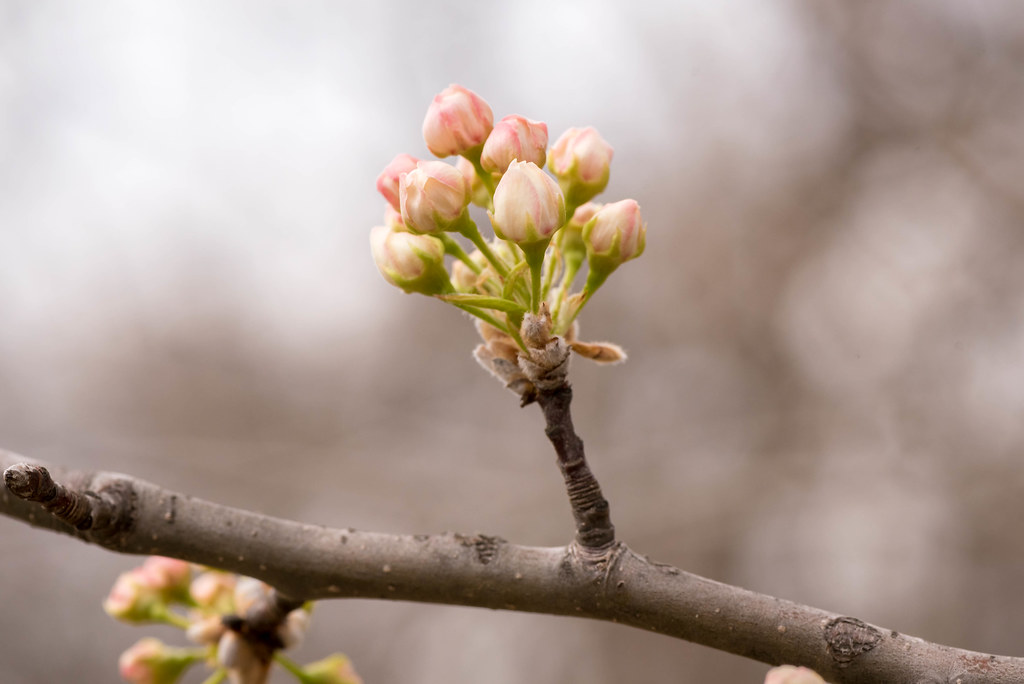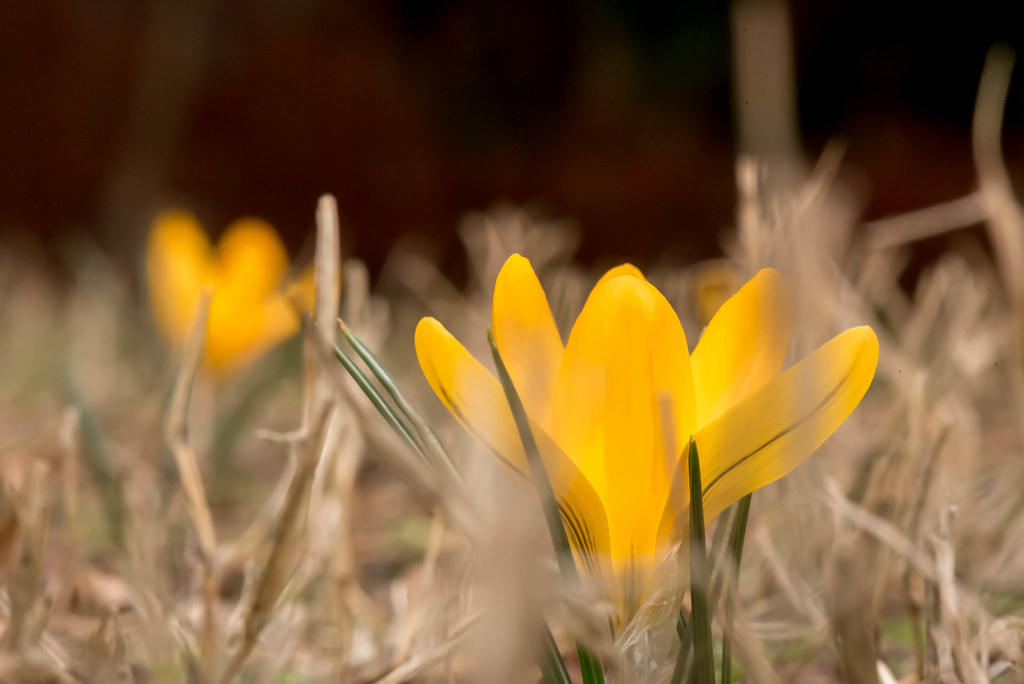
This is a style of picture that I have found I really enjoy creating with my macro lens. It’s a pretty basic composition, with one clear subject in the middle isolated almost entirely from the background, and a secondary object (in this case, a tree branch) going through the frame to catch the viewer’s gaze after initially focusing on the primary subject. It’s not a complicated composition and, in fact, it’s remarkably similar to what I put up on Weekly Fifty last week, but it’s a fun type of picture to create and I still find it challenging and rewarding even after all these years.
There were several things to consider when I took this picture: which group of bulbs to use as my subject (the tree I was standing near was positively brimming with these little flower clumps), how to position myself so the branch was at just the right angle, what to have in the background behind the subject, and how much to isolate the main clump of buds from the rest of its counterparts all over the tree. I took a few shots a bit farther out that showed more of the branch and some additional surroundings, but as I was looking through my pictures I decided that this one was really the standout since it left no question as to what was the focal point of the image while also including just a bit of color in the foreground and background to add a smidgen of context.
As with any macro shot the aperture was of primary consideration, and thankfully even though the sky was overcast there was still plenty of light to shoot at f/13 and still get a nice low ISO of 360. The single bulb in the foreground (which was less than 1/4″ in diameter, just to give a sense of the small size of what you’re looking at) is nice and sharp with the rest slowly becoming blurry, and that was precisely the effect I was aiming for. I’m pleased that it worked out well, though if I could change one thing about this image it would be the bland background. My shot from last week had a nice bright blue sky and a bit of backlighting, and I think that kind of effect would have been fun to see here. I guess I’ll just have to keep my eyes open for similar opportunities in the next few weeks as things warm up and spring starts to show its colors all around.



